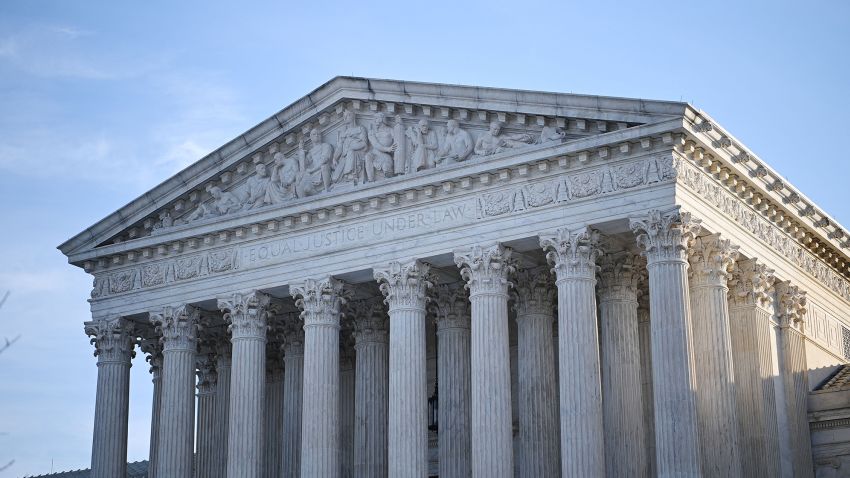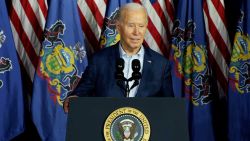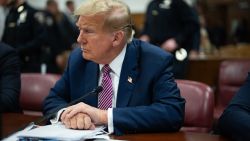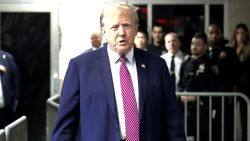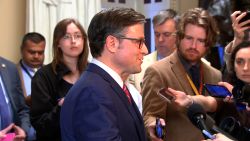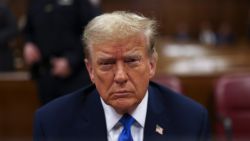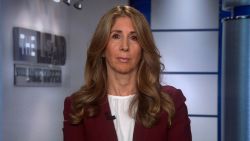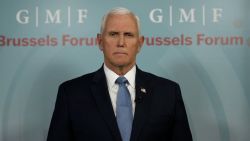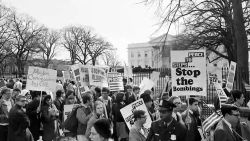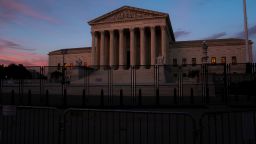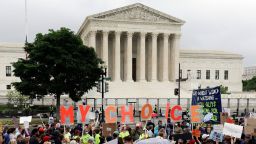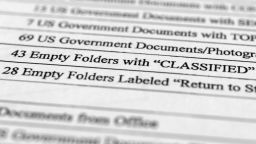The Supreme Court issued an investigative report on Thursday, announcing that it has yet to determine who leaked a draft opinion overturning Roe v. Wade to the media last year, but at least 90 people had access to the document at one point.
In a statement, the court said that the investigative team “has to date been unable to identify a person responsible by a preponderance of the evidence.” It is also unlikely the leak resulted from a computer hack, the statement said.
Investigators said they conducted 126 formal interviews of 97 employees, all of whom denied disclosing the opinion. They also conducted a fingerprint analysis, “looked closely into any connections between employees and reporters,” and “especially scrutinized any contacts with anyone associated with Politico.”
Dozens of people had access to the draft, the report states, adding that a few employees admitted telling their spouses about the draft opinion or the vote count of the justices. While the report notes that violated the court’s confidentiality rules, it does not say whether that led to further investigation or disciplinary action.
The report doesn’t say if justices or their spouses were interviewed, but implies they were not.
“The investigation focused on Court personnel – temporary (law clerks) and permanent employees – who had or may have had access to the draft opinion during the period from the initial circulation until the publication by Politico,” the report reads.
Asked whether the justices themselves were investigated as a part of the probe, the court’s public information officer said she could only refer CNN to the final report.
Employees were asked to sign affidavits, under penalty of perjury to affirm that they did not disclose the draft opinion and had provided all “pertinent information” related to the disclosure of the draft. They were also asked to swear to the truth of the statements before a Notary Public.
The leak – the worst breach of confidentiality in the court’s history – became public on May 2 when Politico published a draft opinion reversing the landmark 1973 decision that established a constitutional right to abortion. The disclosure rocked the court and left some justices with a sense of paranoia inside the confines of the marble-lined hallways. Shortly thereafter, on May 3, Chief Justice John Roberts issued a statement directing the marshal of the court, Gail Curley, to investigate the leak.
Curley oversees about 260 employees, including the court’s police department which has the power to arrest people on the grounds.
In the report Thursday, Curley concluded that “whether or not any individual is ever identified,” the court should implement better policies concerning sensitive information.
“In time, continued investigation and analysis may produce additional leads that could identify the source of the disclosure,” Curley states. “Whether or not any individual is ever identified as the source of the disclosure, the Court should take action to create and implement better policies to govern the handling of Court-sensitive information and determine the best IT systems for security and collaboration.”
During an appearance in Atlanta later in May, Roberts called the leak “absolutely appalling.” Justice Elena Kagan later called it an “obvious, blatant violation of the court’s rules,” and Justice Clarence Thomas equated it to an “infidelity.”
Controversy ends ‘with a whimper’
A number of court watchers on Thursday bemoaned the investigators’ inability to identify a leaker and what it means for the court’s long-term reputation.
“The lack of closure means, for the moment, that the controversy over the leak is more likely to end with a whimper than a bang,” said Steve Vladeck, CNN Supreme Court analyst and a professor at the University of Texas School of Law.
“But the bigger problem is that it does nothing to disabuse anyone of their priors,” he added. “Progressives will still blame conservatives; conservatives will still blame progressives; and everyone will continue to be suspicious of the other side – with the court stuck in the middle.”
Carl Tobias, a professor at the University of Richmond School of Law, said, “It’s pretty disappointing if people wanted to find out who the leaker was,” adding the probe “was useful in the sense that they pointed out a whole number of recommendations, suggestions and ideas about how the court could keep its draft opinions more secure and ways they can prevent future leaking.”
Carrie Severino, president of the conservative Judicial Crisis Network and a former clerk for Justice Clarence Thomas, blasted the “failed” investigation in a series of tweets, writing that the “report reflects the Chief Justice’s utter failure in the administrative aspect in his role.”
“We can only hope that a breach like this never happens again, but I fear that the failed investigation and lack of consequences for the leaker will encourage history to repeat itself,” Severino wrote.
And Gabe Roth, whose group Fix the Court advocates for more transparency and ethical standards in the judiciary, told CNN that “it’s pretty clear to me that since the court was never going to find the culprit.”
He added: “The various intrusions we learned about in the report – looking through law clerks’ Google history, downloading their phone data and fingerprinting a few of them – were unwise.”
IT system hack was unlikely
The report concludes that it was unlikely the leak was the result of a hack of the Supreme Court’s IT systems.
“The Court’s IT department did not find any indications of a hack but continues to monitor and audit the system for any indicators of compromise or intrusion into the Court’s IT infrastructure,” the report said, adding that investigators have also not found evidence that an employee who has special IT access privileges accessed or moved the draft opinion.
Information that investigators obtained from the court’s IT system was used to identify individuals of interest and led to “multiple interviews with certain employees,” the report said.
While investigators found that certain employees emailed the draft opinion to other employees with approval, there “was no evidence discovered that anyone emailed the draft opinion to anyone else, although technical limitations in the Court’s computer recordkeeping at the time made it impossible to rule out this possibility entirely.”
The court’s system lacks “substantial logging and search functions,” the report noted, hindering investigators’ ability to analyze the IT logs.
Seventy users were on the distribution list that was used to send the draft of the opinion on February 10, according to the investigative report. Eight additional people, all permanent personnel, received the draft via email on March 22. It was circulated in hard copy as well, and 34 personnel confirmed they printed out copies of the draft opinion and many printed out more than one copy.
“The investigators collected Court-issued laptops and mobile devices from all personnel who had access to the draft opinion,” the report said, but found “no relevant information” from those devices.
Additionally, all employees who were requested to turn over the call and text records from their personal phones did so voluntarily, “to the best of their abilities.”
“The investigators reviewed the call and text logs retrieved but found nothing relevant in the limited logs,” the report said.
Michael Chertoff says SCOTUS investigation was ‘thorough’
The report made clear that the marshal’s office hired “trained federal investigators” but did not say whether they are current employees of other branches of government.
“The investigative team consists of seasoned attorneys and trained federal investigators with substantial experience conducting criminal, administrative and cyber investigations,” the report said.
The court also “invited” Michael Chertoff, a former federal appellate judge and secretary of Homeland Security, to “assess” the investigation.
Chertoff, in his own statement, said his “review assessed that the Marshal and her experienced investigators undertook a thorough investigation within their legal authorities, and while there is not sufficient evidence at present for prosecution or other legal action, there was important insights gleaned from the investigation that can be acted upon to avoid future incidents.”
He went on to list four recommendations he made to ensure a future leak doesn’t happen, including “restricting the distribution of hard copy versions of sensitive documents” and “limiting the access of sensitive information on outside mobile devices.”
Final opinion closely matched the draft
On June 24, the opinion, which closely tracked the draft, was officially released – changing the landscape of women’s reproductive health nationwide. The decision opened the door to states to ban abortion outright with limited exceptions. According to the Guttmacher Institute, as of December 2022, abortion is unavailable in 14 states and courts have temporarily blocked enforcement of bans in eight others. Even in states where abortion is available, however, clinics have been overwhelmed with an influx of patients from other states.
The opinion was penned by Justice Samuel Alito and joined by Justices Thomas, Neil Gorsuch, Amy Coney Barrett and Brett Kavanaugh.
CNN’s Joan Biskupic reported exclusively that Curley’s team had asked law clerks who serve the justices for a one-year terms to turn over cell phone data and to sign affidavits related to possible disclosure of the leak and had requested electronic devices from some permanent employees who work with the justices.
But by mid-summer, as is the normal practice, most of the clerks that had served during the term had gone on to new jobs, having completed their clerkships.
The opinion triggered protests across the country and a man was picked up near Kavanaugh’s home and later charged with attempted murder. Critics charged that the institution had been irretrievably tainted with politics.
The court has previously remained silent about the investigation, choosing not to release any official updates.
This story has been updated with additional details.


